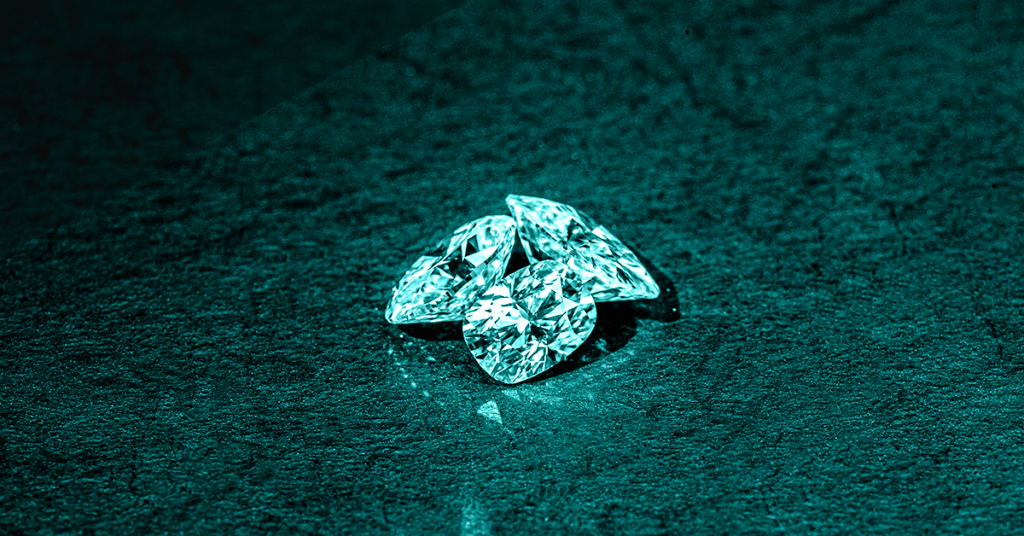
Lab diamonds are created in a lab under controlled conditions, and they are chemically and physically identical to mined diamonds. This means that they have the same chemical elements as mined diamonds.
The chemical composition of a diamond is very simple. It is made up of only one element: carbon. Carbon is a very abundant element in the universe, and it is the fourth most abundant element in the Earth’s crust.
Carbon atoms are arranged in a very specific way in a diamond. They are arranged in a tetrahedral structure, which is a four-sided pyramid. This structure gives diamonds their hardness and their ability to sparkle.
The color of a diamond is determined by the presence of trace elements. Trace elements are very small amounts of other elements that are found in diamonds. The most common trace elements in diamonds are nitrogen, boron, and hydrogen.
Nitrogen is the most common trace element in diamonds. It gives diamonds their yellow or brown color. Boron is responsible for the blue color in diamonds. Hydrogen is responsible for the faint yellow color in some diamonds.
Lab grown diamonds are created using two main methods: high pressure, high temperature (HPHT) and chemical vapor deposition (CVD).
HPHT diamonds are created by placing a small diamond seed in a chamber and subjecting it to high pressure and high temperature. The pressure and heat cause the carbon atoms in the seed to rearrange themselves into a diamond crystal.
CVD diamonds are created by placing a diamond seed in a chamber and exposing it to a gas that contains carbon atoms. The carbon atoms are then deposited on the seed, one atom at a time, until a diamond is formed.
The chemical composition of lab grown diamonds is identical to the chemical composition of mined diamonds. This is because both lab grown diamonds and mined diamonds are made up of only one element: carbon.
Lab grown diamonds are becoming increasingly popular in the UK. In 2021, the UK lab grown diamond market was worth £100 million. This is expected to grow to £200 million by 2025.
The growth of the UK lab grown diamond market is being driven by a number of factors, including:
● The rising cost of mined diamonds.
● The increasing awareness of conflict-free diamonds.
● The growing demand for sustainable jewelry.
If you are considering buying a diamond, you may want to consider buying a lab grown diamond. Lab grown diamonds are a beautiful, affordable, and conflict-free alternative to mined diamonds.
Here are some of the benefits of buying a lab grown diamond:
● Affordability: Lab grown diamonds are often more affordable than mined diamonds. This is because the cost of producing lab grown diamonds is much lower than the cost of mining diamonds.
● Conflict-free: Lab grown diamonds are not associated with conflict or human rights abuses. This is because they are not mined in war-torn regions. ● Environmentally friendly: Lab grown diamonds do not have any negative environmental impacts. This is because they are not mined.
If you are looking for a beautiful, affordable, and conflict-free diamond, a lab grown diamond may be the perfect choice for you.
Here are some of the best places to buy lab grown diamonds in the UK:
● James Allen: James Allen is a leading online retailer of diamonds. They offer a wide selection of lab grown diamonds at competitive prices.
● James Allen lab grown diamonds UK website
● Blue Nile: Blue Nile is another leading online retailer of diamonds. They also offer a wide selection of lab grown diamonds at competitive prices.
● Blue Nile lab grown diamonds UK website
● Brilliant Earth: Brilliant Earth is a company that sells conflict-free diamonds. They offer a selection of lab grown diamonds that are certified by the Gemological Institute of America (GIA).
● Brilliant Earth lab grown diamonds UK website
● Asscher: Asscher is a well-known diamond brand that also sells lab grown diamonds. Their lab grown diamonds are certified by the International Gemological Institute (IGI).
● Asscher lab grown diamonds UK website
When buying a lab grown diamond, it is important to do your research and compare prices from different retailers. It is also important to make sure that the diamond is certified by a reputable gemological laboratory.
